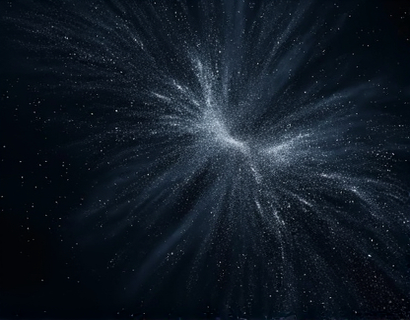Unlocking the Universe: In-Depth Insights for Curious Minds
The cosmos, an endless expanse of mystery and wonder, has captivated human imagination for centuries. From the smallest subatomic particles to the largest galaxies, the universe presents a vast array of phenomena waiting to be explored and understood. This comprehensive guide serves as an essential resource for curious learners and knowledge seekers, offering a deep dive into the realms of astronomy, physics, and cosmology. Whether you are a student, an enthusiast, or simply someone with a thirst for knowledge, this collection of articles and current insights is designed to empower and inspire you to explore the vast universe of knowledge.
The journey into the cosmos begins with the fundamental building blocks of the universe. At the heart of every atom lies the nucleus, composed of protons and neutrons, surrounded by electrons. Protons carry a positive charge, neutrons have no charge, and electrons carry a negative charge. The interactions between these particles govern the behavior of matter and the forces that shape the universe. Understanding these basic components is crucial for delving deeper into more complex topics such as nuclear reactions, stellar evolution, and the structure of galaxies.
Stars: The Cosmic Furnaces
Stars are the luminous spheres of plasma that form the visible components of galaxies. They are born from clouds of gas and dust, primarily hydrogen and helium, which collapse under their own gravity. As the material densifies, temperatures rise, initiating nuclear fusion in the core. This process converts hydrogen into helium, releasing enormous amounts of energy in the form of light and heat. The life cycle of a star, from its formation to its eventual death, is a fascinating topic that reveals the dynamic nature of the universe.
Main-sequence stars, like our Sun, spend the majority of their lives fusing hydrogen into helium in their cores. The duration of this phase depends on the star's mass; more massive stars burn through their fuel faster and have shorter lifespans. When a star exhausts its hydrogen fuel, it evolves into a red giant, expanding and cooling as it begins to fuse helium into heavier elements. This stage can lead to various endpoints, including white dwarfs, neutron stars, or black holes, depending on the star's initial mass.
Galaxies: Island Universes
Galaxies are vast collections of stars, gas, dust, and dark matter, bound together by gravity. Our own galaxy, the Milky Way, is a barred spiral galaxy containing hundreds of billions of stars. Galaxies come in various shapes and sizes, including elliptical, spiral, and irregular forms. The study of galaxies provides insights into the large-scale structure of the universe and the processes that govern cosmic evolution.
Galactic formation is believed to have begun shortly after the Big Bang, with dark matter playing a crucial role in the initial collapse of gas clouds. Over time, these clouds fragmented and formed stars and galaxies. Interactions between galaxies, such as mergers and tidal interactions, have shaped their current forms and influenced star formation rates. Observations of distant galaxies, often seen as they were billions of years ago, help astronomers understand the history and evolution of the cosmos.
Cosmic Expansion and the Big Bang
The Big Bang theory is the prevailing cosmological model that explains the origin and evolution of the universe. According to this theory, the universe began as an extremely hot and dense state around 13.8 billion years ago. From this initial singularity, the universe expanded and cooled, allowing for the formation of subatomic particles, atoms, and eventually, the first stars and galaxies.
Evidence for the Big Bang comes from multiple lines of observation. The cosmic microwave background (CMB) radiation, a faint glow of light that fills the universe, is a remnant from the early stages of the cosmos. The uniformity and slight anisotropies in the CMB provide crucial information about the universe's early conditions and the seeds of cosmic structure. Additionally, the observed abundance of light elements, such as hydrogen, helium, and lithium, aligns with predictions from Big Bang nucleosynthesis.
Dark Matter and Dark Energy
Despite the progress in understanding the universe, many mysteries remain. Two of the most significant are dark matter and dark energy, which together make up about 95% of the universe's total mass-energy content. Dark matter, a form of matter that does not interact with electromagnetic radiation, is inferred from its gravitational effects on visible matter, galaxy rotation curves, and the large-scale structure of the universe. Its exact nature remains unknown, but it plays a crucial role in the formation and stability of galaxies.
Dark energy, on the other hand, is a mysterious force that is causing the expansion of the universe to accelerate. Discovered in the late 1990s through observations of distant supernovae, dark energy constitutes about 68% of the universe's total energy density. The nature of dark energy is one of the biggest puzzles in modern physics, with various theories proposed to explain its properties and origins.
Exoplanets and the Search for Life
The discovery of exoplanets, planets orbiting stars outside our solar system, has revolutionized our understanding of planetary systems and the potential for life beyond Earth. Since the first exoplanet was detected in 1992, thousands have been discovered, with many located in the habitable zones of their host stars, where conditions might be right for liquid water to exist.
The search for extraterrestrial life is an exciting frontier in astrobiology. Scientists use a variety of methods to identify planets with conditions similar to those of Earth, including transit photometry, radial velocity measurements, and direct imaging. Future missions, such as the James Webb Space Telescope and the European Extremely Large Telescope, will play pivotal roles in characterizing exoplanet atmospheres and searching for biosignatures.
Black Holes: Gates to the Unknown
Black holes are regions of spacetime where gravity is so strong that nothing, not even light, can escape. They form when massive stars collapse under their own gravity at the end of their lives. The boundary of a black hole, known as the event horizon, marks the point of no return. Inside the event horizon, the laws of physics as we know them break down, leading to the concept of a singularity, a point of infinite density.
Supermassive black holes, with masses millions to billions times that of the Sun, reside at the centers of most galaxies, including the Milky Way. These giants influence the dynamics and evolution of their host galaxies through processes such as accretion and jet formation. Understanding black holes is crucial for testing the limits of general relativity and exploring the fundamental nature of spacetime.
Cosmic Inflation and the Multiverse
Cosmic inflation is a theory that proposes a rapid exponential expansion of the universe during its earliest moments, solving several puzzles in cosmology, such as the uniformity of the CMB and the flatness of the universe. This period of inflation is thought to have occurred fractions of a second after the Big Bang, driven by a scalar field known as the inflaton.
The concept of the multiverse extends beyond our observable universe, suggesting the existence of multiple, perhaps infinite, universes with different physical laws and constants. While still highly speculative, the multiverse theory arises from various interpretations of quantum mechanics and string theory. It challenges our understanding of reality and the uniqueness of our universe.
Engaging with the Cosmic Community
Exploring the universe is not a solitary endeavor. Engaging with a community of like-minded individuals can greatly enhance your learning experience and provide new perspectives. Online forums, social media groups, and local astronomy clubs offer platforms to discuss ideas, share resources, and collaborate on projects. Participating in citizen science initiatives, such as classifying galaxies or monitoring variable stars, allows amateur astronomers to contribute to real scientific research.
Educational institutions and public observatories often host lectures, workshops, and stargazing events that are open to the public. These opportunities not only deepen your knowledge but also connect you with experts and enthusiasts who share your passion for the cosmos. By joining these communities, you can stay updated on the latest discoveries and advancements in the field of astronomy and cosmology.
In conclusion, the universe is a vast and intricate tapestry of mysteries waiting to be unraveled. From the fundamental particles to the largest structures, each element of the cosmos offers a window into the workings of the universe. By continuing to explore and learn, we not only expand our understanding of the world around us but also inspire future generations to carry on this quest for knowledge. Whether you are a seasoned astronomer or a curious newcomer, the journey through the cosmos is an enriching and rewarding adventure.










































